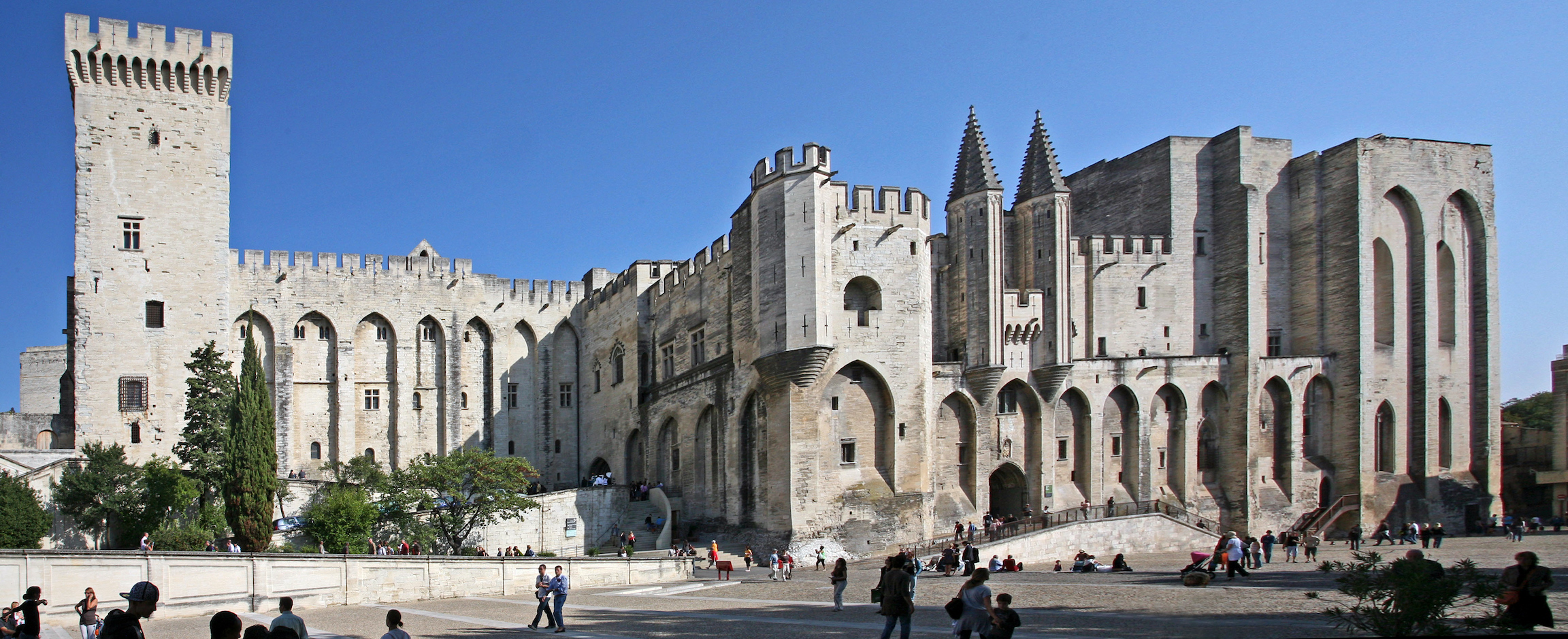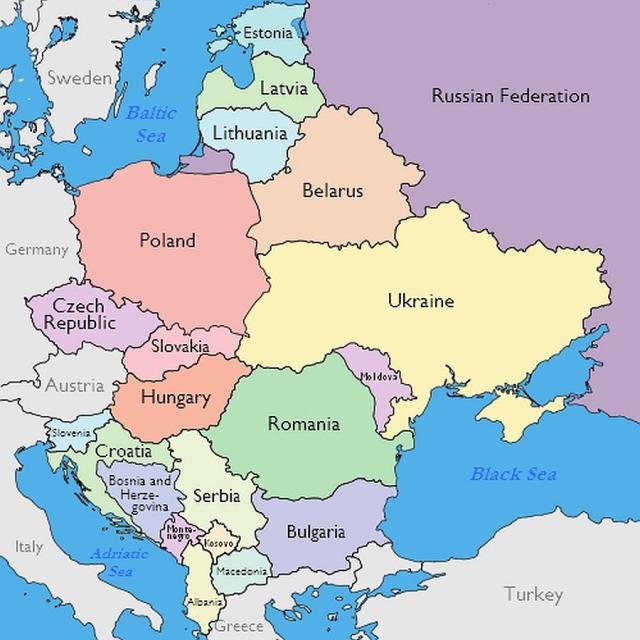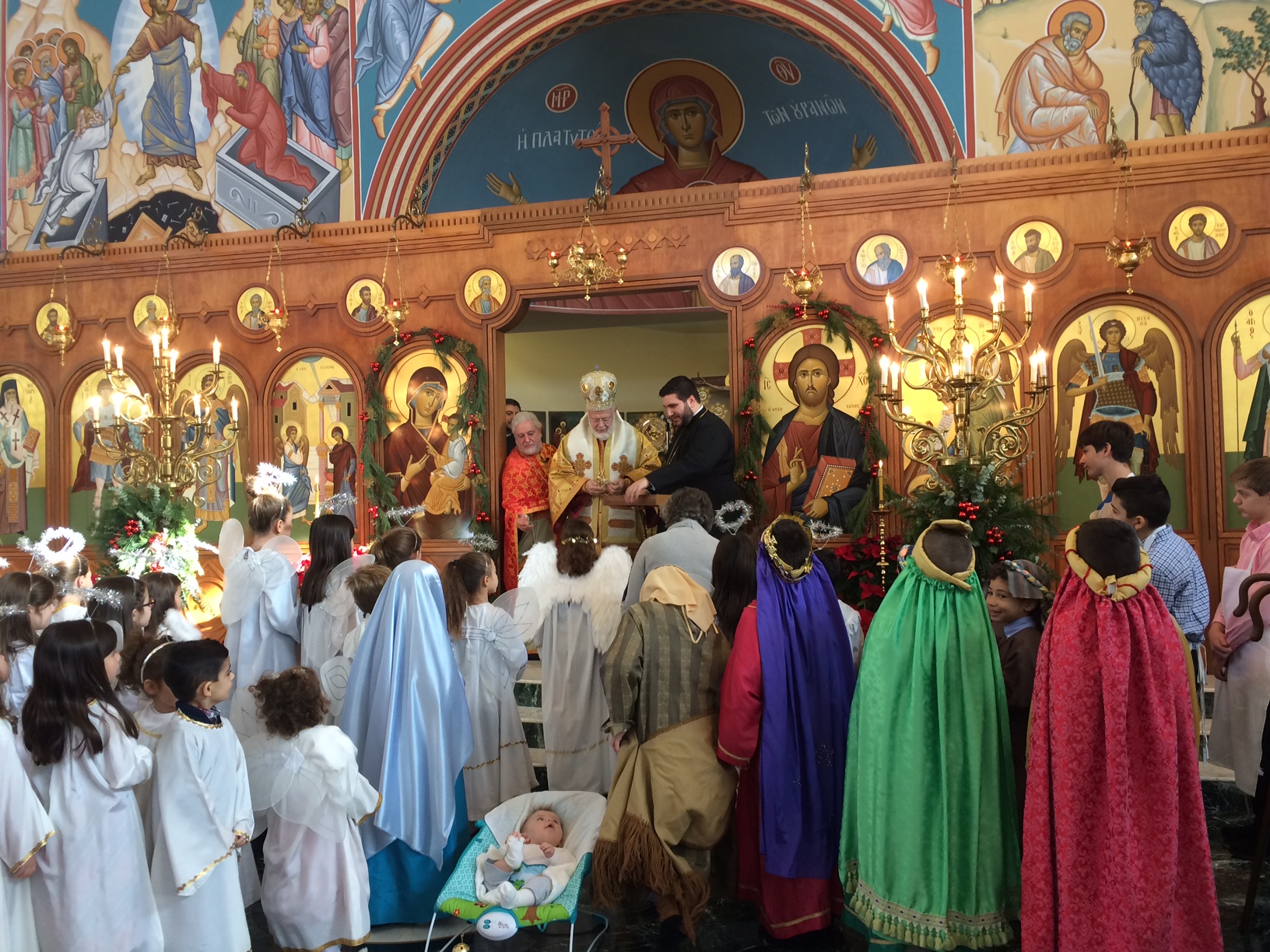History of Christianity Class 13
The Inquisitions & The Holy Tradition
Mike Ervin
History of Christianity Class 13
The Inquisitions & The Holy Tradition
Calamities and Conflicts in Christendom
We mentioned last week that most historians of Christianity in Europe mark the 13th century as the high water mark for Christendom. Things went downhill after that. It is important to understand that the initial downhill portion was rather catastrophic, and had nothing to do with the church or the Holy Roman Empire.
The self-confident ventures of the High Middle Ages—the Crusades, cathedrals, and universities, were followed by a period of calamity in the 14 century that had negative effects on the church and society.
The first devastating event of this century was the great famine of 1315– 1317, brought on by a general shift from a moderate to a colder climate. And resulting in widespread starvations. A mere nine years later, the black plague hit, killing about half of the population worldwide. This was followed by manmade disasters, including a series of wars between Christian kings and their vassals. The obvious effect of these disasters was to induce an even sharper sense of mortality and fear within the population—and a desperate search for causes.
The Church Conflicts
The papacy began to exceed all its prior claims to total authority in matters secular and sacred.
Boniface VIII (c. 1298–1303) issued a papal bull, Unam sanctam, in 1302 that not only claimed papal authority over the world but also declared that no one could be saved without acknowledging that authority. In 1303, he died as a prisoner in the Vatican.
In 1309, the French pope Clement V took up residence in Avignon, a town in the southern region of France, beginning what’s known as the “Babylonian Captivity of the Church,” a period of more than a century when the Popes resided outside of Rome.

This the the magnificent palace constructed for the Pope in Avignon France.
The death of Gregory XI in 1378 resulted in a divided papacy, with Clement VII reigning at Avignon and Urban VI in Rome. The “Great Schism” of Pope and Antipope continued until the Council of Constance in 1414 and was not completely resolved until 1417.
It is also important to understand that this type of conflict did not stop even after the Pope returned to Rome. Over about 2 centuries there were about 31 Antipopes, as each time enough Bishops got disgusted with a Pope they held their own separate election and elected a new one. For the most part though the Pope in Rome was normally considered the legitimate one, and this era of conflicts eventually passed.
Extreme Responses – the Inquisition
Until the 12th century bishops had followed the advice “Faith should come through persuasion rather than force”.
But in 1184 Pope Lucious III declared that bishops were to make inquisition for heresy in their dioceses and hand heretics over to secular authority for punishment.
When this local process proved ineffective, Pope Gregory IX took control of the inquisition around 1233, using members of the new mendicant orders as inquisitors. The mendicant inquisitors were answerable only to the papacy, not to local bishops, although they still relied on secular authorities to carry out their decisions.
Inquisition – Definition and Purpose
The term Inquisition comes from Medieval Latin "inquisitio", which referred to any court process that was based on Roman law, which had gradually come back into usage in the late medieval period. Today, the English term "Inquisition" can apply to any one of several institutions that worked against heretics (or other offenders against canon law) within the judicial system of the Roman Catholic Church.
"The Inquisition, as a church-court, had no jurisdiction over Moors and Jews as such. "Generally, the Inquisition was concerned only with the heretical behavior of Catholic adherents or converts.
Inquisition – Sentences
The overwhelming majority of sentences seem to have consisted of penances like wearing a cross sewn on one's clothes, going on pilgrimage, etc.
Serious offenders could be confined in the inquisition’s prisons and burned at the stake by secular authority.
Inquisition activities tended to be sporadic and localized. With the Spanish inquisitions considered to be the most severe.
Estimates of total executions in all of the Spanish Inquisitions range from about 2000-3000 over about 350 years. And the term Spanish Inquisition also later encompassed all of the Spanish mission fields in the Americas and Asia.
Eastern Orthodox Christianity – Holy Tradition
At this point in our great saga of the development of Christianity we have now seen the Eastern Empire’s total collapse as Constantinople fell to the Muslims in 1453. This marks the end of the Eastern Roman Empire. Never to return. The Roman Empire is now gone.
So it is important now to turn back to the Eastern Christian Church and assess how the Church did when it lost all of its Imperial support.
The simplistic answer - Eastern Orthodoxy survived by earlier breaking out of the bounds of the Eastern Roman Empire and rapidly expanding further east and north to the Slavic people, beyond the reaches of Islam. We will briefly review that history.
The Mission to the Slavs
First – who are the Slavs?
Slavs are the largest Indo-European ethno-linguistic group in Europe. They are native to Central Europe, Eastern Europe, Southeastern Europe, Northeastern Europe, North Asia, Central Asia and West Asia. Slavs speak Slavic languages of the Balto-Slavic language group.
From the early 6th century they spread to inhabit most of Central, Eastern and Southeastern Europe. This is the third instance we have seen of a great migration of peoples across parts of Europe. In the 3rd - 5th centuries it was the German tribes inundating western Europe. To a great extent these Slavic tribes moved in behind the German tribes as they left their lands. Part of the emphasis for ding that was also their fear of the Huns. But just as important was their desire to find better lands.
States with Slavic languages comprise over 50% of the territory of Europe, therefore it is the largest ethno-linguistic group in Europe by land area. Present-day Slavic people include for example, Belarusians, Ukrainians, Russians, Serbians, Bulgarians, and Macedonians.
In the ninth century two brothers from Thessalonica initiated mission work to the Slavs. Cyril and his older sibling Methodius. They are now referred to as “the apostles of the Slavs.”
They were both highly educated, and were monks of the Eastern Orthodox church.
In 860–861, the brothers went on a diplomatic mission to the Khazars (north of the Caucasus) and, while there, learned the Slavic language, which importantly, as yet existed only in speech, not in writing.
Cyril then decided that the Slavic languages needed an alphabet so that Christianity could be spread through Bible written in Slavic tongues. Cyril invented the Glagolithic alphabet (Cyrillic), which became the medium for the translation of the Bible into Slavic and the development of a substantial ecclesiastical literature in Slavic.
Cyrillic is the basis of alphabets used in various languages, past and present, in parts of Southeastern Europe and Northern Eurasia, especially those of Slavic origin, and even in non-Slavic languages influenced by Russian. As of 2011, around 252 million people in Eurasia use it as the official alphabet for their national languages. About half of them are in Russia. Cyrillic is one of the most-used writing systems in the world. And as people learned to write with this new language the reading material they had was the Slavic translations of the Bible provided by Cyril.
Thus the Slavic people were often exposed to Christianity exclusively through the church's established in the East (Constantinople being the first). There was little competition from other religions.
And the Result?
Christianity took a firm hold in the Ukraine and Russia through the grand prince Vladimir (d. 1015), who held sway over those lands. Adopting Orthodoxy, he subsequently imposed it on the territories he had conquered.
From that time forward the relationship of the Russian patriarch in Moscow and the czars (“Caesars”) mimed the dance of caesaropapism characteristic of Constantinople.
Orthodoxy was able both to survive and thrive in these Slavic lands and escape the vigorous attempts at conversion by both the later Roman Catholic church and Islam.
The result – a very large land area of Slavic speaking countries adopted the Holy Tradition of Eastern Orthodox Christianity and remain thoroughly Christian today.
So where are most of the Eastern Orthodox? Russia is the dominant country.
10 Countries with Largest No. of Orthodox
Russia. 101,450,000
Ethiopia 36,060,000
Ukraine 34,850,000
Romania 18,750,000
Greece 10,030,000
Serbia 6,730,000
Bulgaria 6,220,000
Belarus 5,900,000
Egypt. 3,860,000
Georgia 3,820,000
Sub-Total 227,660,000

The
Slavic/Cyrillic Countries
A look at a current Eastern European map shows very clearly where the Slavs settled after their massive migration into Europe in the 6th century. The countries listed below all are of Slavic heritage, and all use the Cyrillic alphabet.
Russia, Macedonia, Serbia, Bulgaria, Romania, Moldova, Ukraine, Belarus, Greece, Georgia (Georgia is off the map on the eastern coast of the Black Sea).
They are all overwhelmingly Eastern Orthodox (between 70 and 93 % of the total population. This is the most Christianized region in the world.
Authority and Organization
We now turn to a look at the church itself to better understand how it differs from the Roman Catholic church, and of course of the various Protestant denominations.
The religious authority for Eastern Orthodoxy is not a Patriarch or the Pope as in Catholicism, nor the Bible as in Protestantism, but the scriptures as interpreted by the seven ecumenical councils of the Church.
Jesus Christ is the head of the Church and the Church is his body. The authority and the grace of God is directly passed down to Orthodox bishops and clergy through the laying on of hands a practice started by the apostles.
The Eastern Orthodox communion is organized into several regional Churches, which are either autocephalous or lower ranking autonomous Church bodies unified in theology and worship.
In Eastern Orthodoxy, bishops and monastics are celibate. In fact many of the Bishops are recruited from the monasteries. However, candidates for the priesthood and diaconate are allowed to marry if they do so before ordination. As candidates for priesthood indicate an interest in qualifying for ordination to the priesthood they are carefully counseled to decide before ordination whether they want to marry and if so to get married beforehand. If they marry after ordination they must leave the priesthood.
Sacraments, Rites, Ceremonies
Eastern Orthodoxy recognizes the same seven sacraments as the Roman Catholic tradition. They are baptism, chrismation (confirmation), Eucharist, confession, ordination, marriage, and the anointing of the sick. As in other Christian traditions, baptism and the Eucharist are the most significant sacraments.
Baptism is conducted by full immersion, with liberal amounts of water used. The Eucharist is offered with leavened bread. The priest does not go behind a screen to hear confession, but stands with the person confessing, and lays his hands on the person's head.
Sunday services consist of two liturgies – Orthos and the Divine Liturgy. The Orthos is the longer service and is composed of and unbroken series of scripture readings and prayers.
The services are always sung or chanted and never said, with the exception of occasional sermons.
The Eucharist Service
The Eucharistic service is called the Divine Liturgy in Eastern Orthodoxy. The Divine Liturgy dates at least to the time of in the 4th century. Basil wrote down a form of the liturgy in use at the time, based a liturgy by James the Apostle, first bishop of Jerusalem. Called the Liturgy of St. Basil the Great, Basil's liturgy is used at special times during the year, while the normal Eucharistic service uses the Liturgy of St. John Chrysostom, a slightly shorter version of Basil's liturgy.
No words have been changed in that liturgy. Not for 17 centuries.
This promotes a sense of universality, as every Orthodox Christian in the world prays and worships in the same way. The repetition of a shared liturgy across the centuries reflects the Orthodox Christians' belief in participation in a communion of saints, the community of Christians past and present.

A Divine Liturgy In Massachusetts
This a a photograph from a church in Massachusetts in the final part of the Divine Liturgy, the Eucharist itself. As you can see the communicants are gathering to receive the blood and body of Christ.
There are many aspects of Eastern Orthodoxy evident in this picture. One is simply the color. Their churches are a riot of color. Another is the vestments worn by the many priests and deacons. They are also colorful and beautiful, and changing for different parts of the service.
The walls and sometimes the ceilings are completely covered by icons. This front wall, called the iconstasis, has a long row of icons of saints, the center ones are usually of Jesus, Mary, and John the Baptist. There are flat places under all of the icons for worshippers to bring a lit candle and place it there at any time during the service.
The bread used in the Eucharist is baked, arranged, and cut in specific ways to recall such Gospel stories as the miraculous feeding of the five thousand, and the crucifixion.
All priests wear distinctive garments called vestments, which also carry symbolic meaning. The priest will say specific prayers as he puts on each piece of clothing; most of these prayers come from the Old Testament and explain its meaning. For example, when the priest puts on a cloth belt called a zone or girdle, he prays, "Blessed is God, who girds me with power and has made my way blameless. He strengthens my feet like hind's feet and sets me on high places" (from Habakkuk 3:19).
There is nothing spontaneous about the conduct of the liturgy. Every word and act is prescribed in minute detail, and every aspect of the service is symbolic. The symbolism is rooted in the stories of the Bible, particularly the New Testament. For example, the wine used in the Eucharist must be red, because that is the color of blood. It is mixed with water, because the Gospel of John reports that after Jesus had died on the cross, a soldier pierced his side with a spear and blood and water flowed out (John 19:33-35).
Orthodox Christians believe that at the very end of the Eucharistic prayer, the bread and wine are literally transformed into the body and blood of Christ. As a result, all of the bread and wine, including the smallest drops and crumbs, are treated with the greatest care.
The Divine Liturgy is marked by beauty and splendor, evoking a sense of awe and wonder. Yet the congregation displays a feeling of informality rarely seen in the western traditions. Orthodox Christians stand throughout the service, but they also walk around, pray and make offerings before icons, bow or prostrate themselves, and make the sign of the cross, as they are moved to do so. People arrive late and leave early.
The Hours
The daily prayer cycle begins at sundown with Vespers. This tradition comes from the Jewish tradition, the way the disciples and Christ would have prayed.
Compline is a time of prayer before retiring to give thanks for all the blessings of the day.
Midnight
1st hour , 3rd hour, 6th hour, 9th hour. Prescribed prayers and Psalm readings for each.
"Pray Unceasingly"
Paul, in the letter to the Corinthians exhorted them to pray unceasingly. The Orthodox tradition takes this very seriously, and the monks try to pray all of the time that they are awake. Lay Christians are encouraged to do the same. The recommended prayer is the Jesus Prayer", which has been in use since the 8th century.
The Jesus Prayer
“Lord Jesus Christ, Son of God, Have Mercy on Me, the Sinner.”
And so the Eastern Orthodox version of Christianity did survive and thrive despite losing (for a while), its Imperial support. Today it exists around the world, but is very highly concentrated in Eastern Europe and a select few African nations.